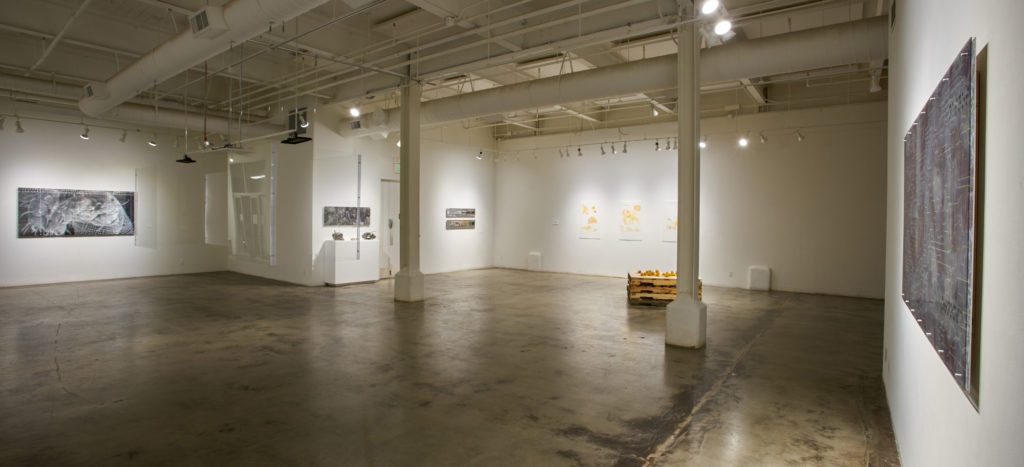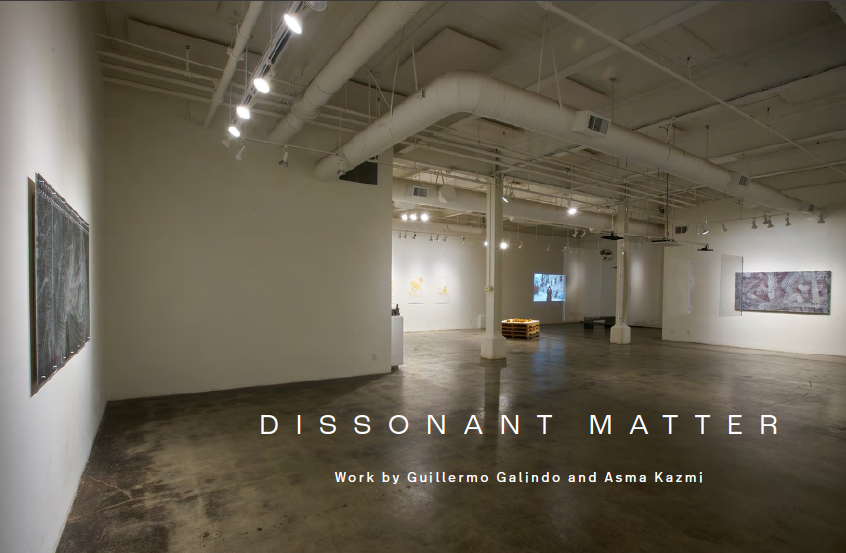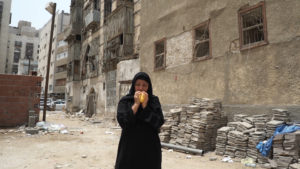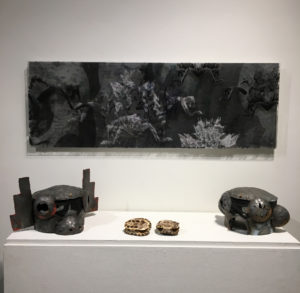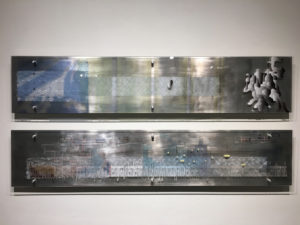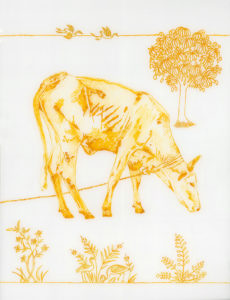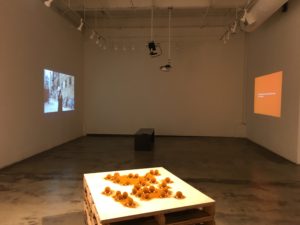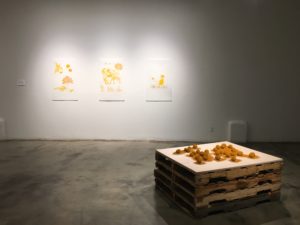Dissonant Matter
Exhibition Catalog is available for download here.
Dissonant Matter from Kala Art Institute on Vimeo.
Kala Gallery is excited to present Dissonant Matter, a two-person exhibition of work by Guillermo Galindo and Asma Kazmi. This exhibition brings together new work by Galindo and Kazmi and focuses on tales of migration from non-human perspectives. Their projects reflect on the history of colonialism, global flows of trading goods and migrant labor, and transformation of information and knowledge systems.
In addition to Guillermo and Asma’s artwork, Sugata Ray, Associate Professor of South and Southeast Asian Art at the University of California, Berkeley offers an overview history of the global circulation of plants that commenced with European imperialism in the Americas in his essay for the exhibition catalog.
Sugata’s research and writing focuses on climate change and the visual arts from the 1500s onwards. Ray is the author of Climate Change and the Art of Devotion: Geoaesthetics in the Land of Krishna, 1550–1850 (2019) and co-editor of Ecologies, Aesthetics, and Histories of Art (2020) and Water Histories of South Asia: The Materiality of Liquescence (2019).
Guillermo Galindo is a post-Mexican composer, performer, and visual artist. Galindo redefines the conventional limits between music composition and the intersections between art disciplines, politics, humanitarian issues, spirituality and social awareness.
Asma Kazmi creates transdisciplinary artworks that unearth invisible, forgotten, and ignored histories. Kazmi’s research based practice, working between US, India, Pakistan, Europe, and the Middle East, allows her to imagine embodied linkages with her subjects in various cultural contexts.
In this exhibition Kazmi presents a new installation, Fruit from Elsewhere – a multimedia project about the Indian mango. The installation unfolds with a rhizome-like logic—documenting South Asian and colonial representations of the fruit, hearsay and scientific reports about the use of mango in pigment extraction, and the artist’s longing for the fruit in known and unknown places. These intertwining stories ask questions about complex trade routes, global flow of people and commodities, colonial and indigenous knowledge systems, and interspecies entanglements. Kazmi’s work also explores devotional interaction between two bodies: human and fruit.
Guillermo Galindo is presenting an installation Sonic Biogenesis – Genomics and Mutant Jungles, which features “genome scores,” visual representations of his musical compositions alongside artwork showing the texture of plants, animals, and microbes. With plexiglass sound booths, these pieces illustrate Galindo’s fascination with symbolic language, visual data, codification, and the interpretation of arrays of data into other media.
Galindo’s installation also explores how research and data have historically expressed and sustained systems of power, particularly relating to colonialism. Writer Nick Stone describes this series in the following way “Galindo says that these works evoke “mutant jungles,” a comment on the colonization of the microscopic world by corporations. Just as the Spanish colonized the New World, he explains, assigning names to the “new” species they encountered, so do today’s corporate powers use patents to assert their dominance over a world of flora and fauna that is hidden from the naked eye.” Galindo’s Sonic Biogenesis also provides commentary and counterpart to the Huntington’s exhibition “Visual Voyages: Images of Latin American Nature from Columbus to Darwin.”
Galindo is planning a music performance during the exhibition.
This exhibition is funded in part by the East Bay Fund for Artists.
Kala Gallery is temporarily closed due to the updated Covid restrictions. We will put more updates soon.

